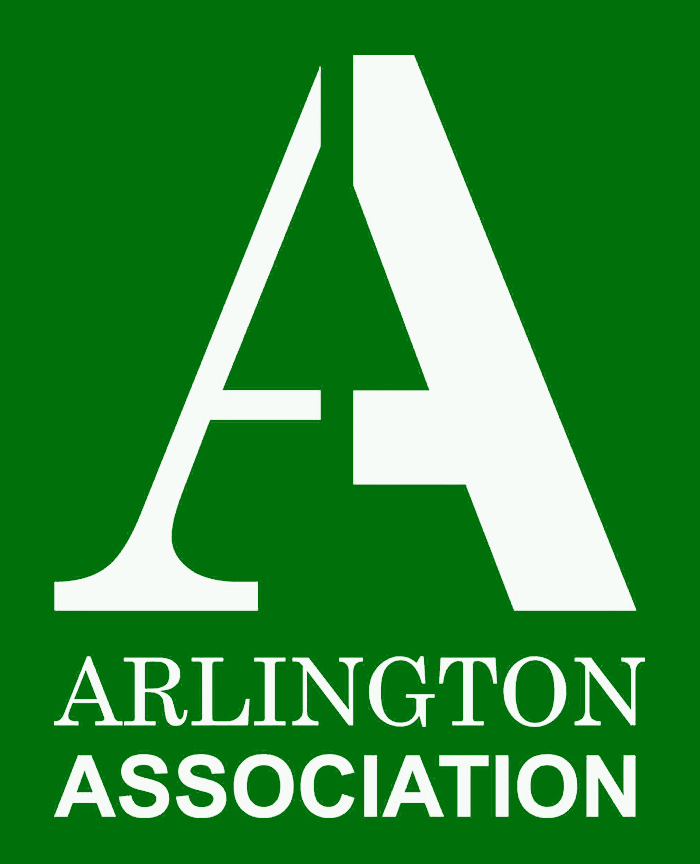Pre-war Arlingtonia - Memories of a nonagenarian
Arthur (right) beside Regents Canal with father Claude, sister Doris and brother Sid. Doris lived in Arlington Avenue until 1982.
Arthur Casbolt was born in 1922 in 25 Arlington Square. Three families lived in the house, and the Casbolts occupied the two rooms on the top floor. Arthur’s grandmother lived in the basement, where Arthur and some of his family slept. All the residents shared the one toilet in the house and, like most people, used the public baths in Popham Street. Arthur’s dad Claude worked at the post office in Mount Pleasant while mum Louisa Mary Anne looked after the family. They rented the rooms through an army contact of Claude’s who worked for London & Manchester Assurance, the company that owned many of the houses in the area.
‘The square was always locked,’ Arthur recalls, ‘but I would climb over the railings and up the trees to collect caterpillars, which I kept in matchboxes until they became butterflies. We respected the local policemen. They’d slap me on the back of the head and tell me not to do it again. But of course I did. There were no gangs then. We played rounders and hopscotch in the streets and I built an aviary for my canaries in the back garden.’
Arthur went to Queen’s Head Street School (later rebuilt as Islington Green School and now City of London Academy). He belonged to the 58th London Boys’ Brigade and ran errands for pocket money. He once spent a whole £1 on a BSE bike he bought in Petticoat Lane. Some afternoons his grandmother would take him to the Conservative Club in Upper Street for free tea and biscuits. At Christmas an aunt would treat him to a meal at Lyons’ Corner House at the Angel, followed by the pantomime at the London Palladium and a visit to Selfridges for a toy. ‘Posher than posh!’ says Arthur.
For holidays the family would walk through Finsbury Square and Bishopsgate Market to Tower Bridge where they’d board a paddle steamer (either Crested Eagle or Golden Eagle) for a week’s holiday in Southend, Margate or Ramsgate. ‘They lifted Tower Bridge for the paddle boat – and as soon as we were through, the boat’s bar would open.’
Arthur left school at 14 and went to work for the pharmaceutical manufacturers British Drug Houses in Graham Street. He walked to work along the canal, which then had factories on its south side, including one that made clothes for C&A. He recalls shopping for fruit and veg at Chapel Market, and drinking in the Hanbury Arms and the Britannia in Ironmonger Row.
Arlington Square, he remembers, was unlocked early in the Second World War. Like Union Square, it was used for allotments, and as a mooring for barrage balloons. It was too risky to sleep at home during the Blitz, as enemy planes followed the canal dropping fire bombs. ‘Every night we’d walk to Moorgate to sleep in the underground station, and in the morning we’d walk to work amid the bomb damage. During the war neighbours became one big happy family, helping each other out. The bombs took the roof off our house and we stayed in various places locally until it was repaired.’
Arthur was called up to the army, fought in North Africa and was seriously injured on active service. He was hospitalised first in Liverpool, then in Sheffield, where he met Lily Ashmore. They spent a couple of years together in Arlington Square, both working for British Drug Houses, and married in 1946. But unable to find a house in London, they moved back to Sheffield, where Arthur still lives. They were married for 61 years, until Lily’s death in 2007.
Arthur, who will be 94 in November, may have lived in Yorkshire most of his life, but he still recalls Islington with great fondness. ‘I have such happy memories. Somehow I felt more affluent then than I do these days. Life really is what you make of it.’
His son Paul recently met some Arlingtonians when he visited us during our National Gardens Scheme open day in June. Thank you, Paul, for putting us in touch with your Dad.
Picture: Arthur (right) beside Regents Canal with father Claude, sister Doris and brother Sid. Doris lived in Arlington Avenue until 1982

